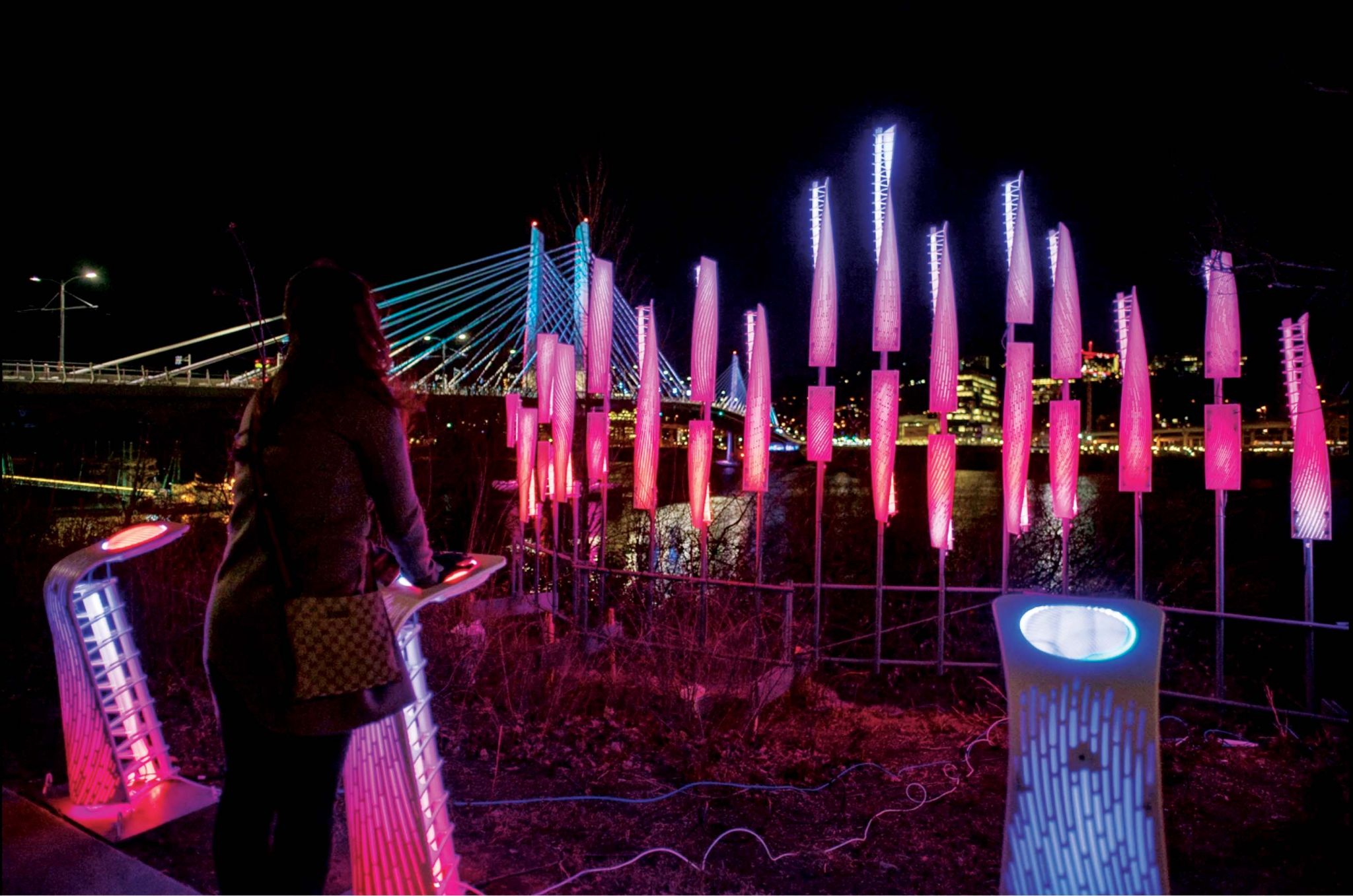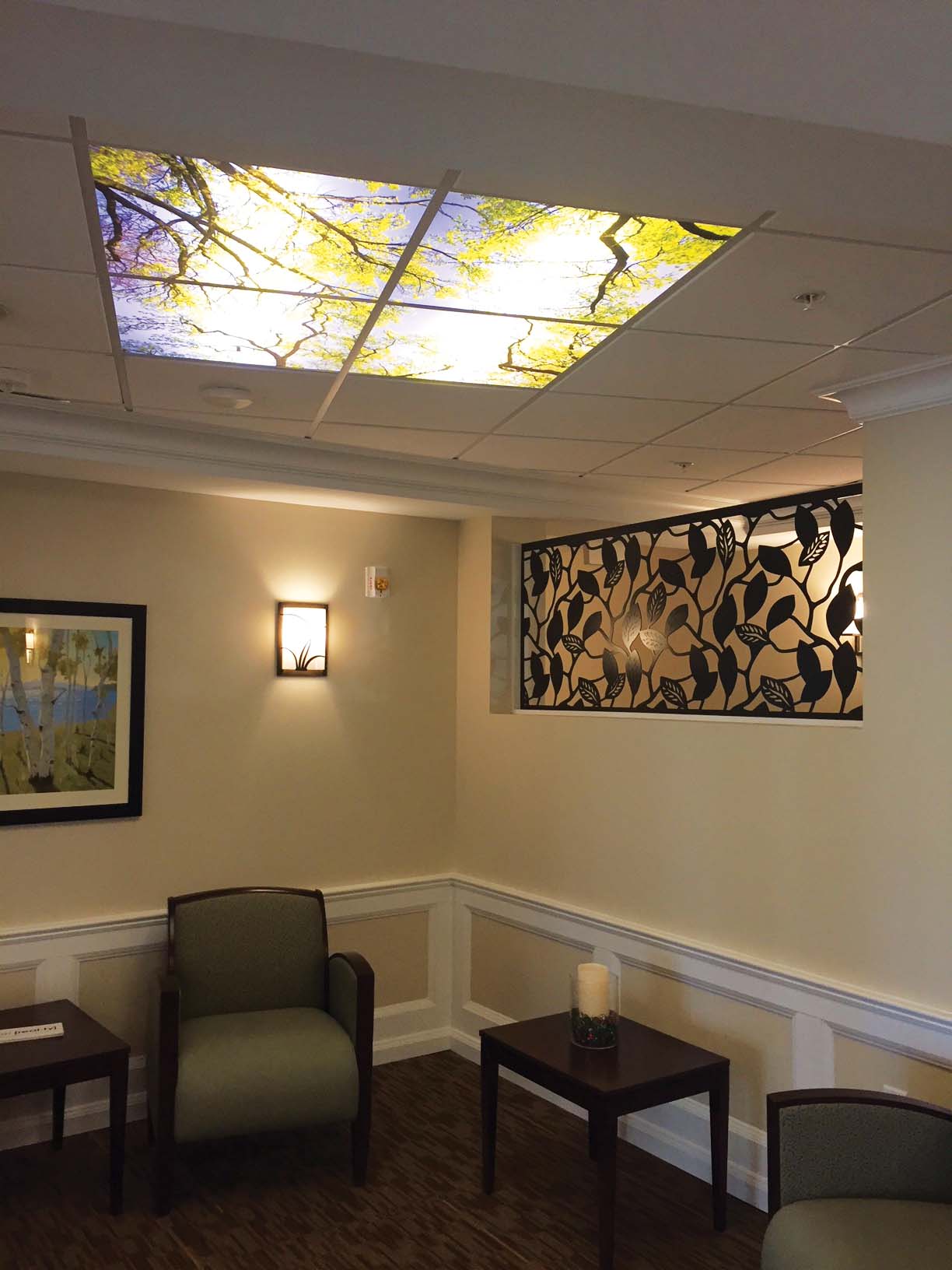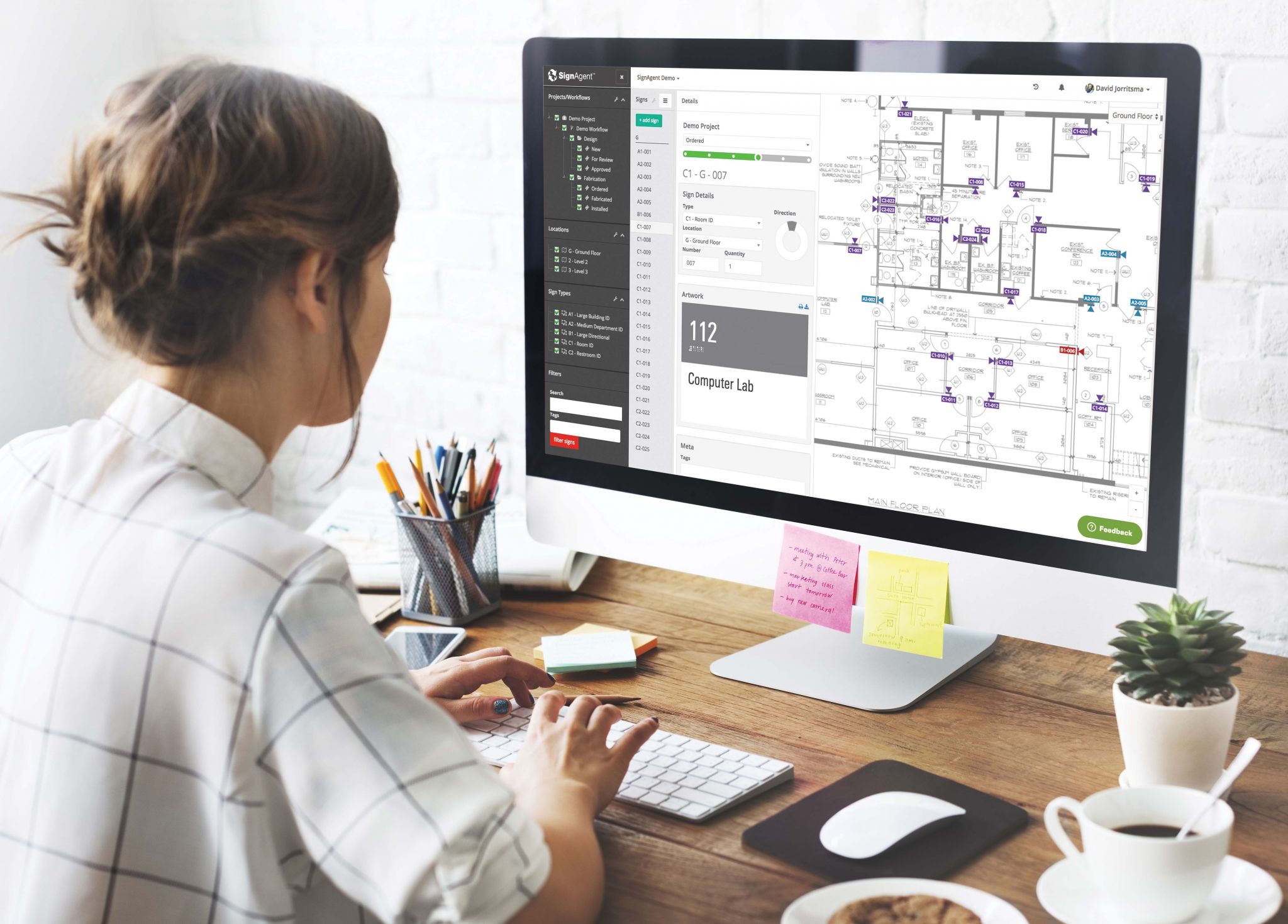Sign Design and Fabrication: A new model for collaboration
by all | 23 February 2018 11:45 am
 [1]
[1]Images courtesy Craig M. Berger
By Craig M. Berger
Sign designers and fabricators have been collaborating for decades, each understanding the importance of their roles in creating great results. Much of the structure for this tradition of collaboration was organized in the seminal book, Architectural Signing and Graphics, written in 1979 by John Follis and David Hammer.
Under this structure, designers were responsible for determining the content, material palette and basic form. Their design intent was then interpreted by fabricators, who provided a preliminary budget and approach.
Sometimes, the fabricator would suggest changes, which the designer would adapt or incorporate, especially to fit the budget; but in the end, both sides usually kept each other at arm’s length.
This overall approach to collaboration has been enshrined by many sign design and fabrication firms, to the point where they know few other ways of working. In recent years, however, trends in technological development, communications and market competition have all encouraged more open and creative approaches, leading to greater integration of designers’ and fabricators’ efforts.
Planning balanced roles
Intense competition among architectural signage companies, in particular, has tended to encourage closed approaches to the design and planning processes. The resulting collaborations have reinforced which side has the most power in the relationship.
Fabricators will often hire designers and consultants to support their team on larger projects, for example, but in the end, the fabricator controls the process. Meanwhile, the reverse occurs when designers bring in a fabrication team to fulfil specific roles, like value engineering or final documentation.
The best methodologies, however, come about when both the designer and the fabricator have somewhat equal and balanced roles and take an approach that reinforces the strength of each group. This approach can often yield richer and more diverse perspectives. To be successful, of course, it first needs to be clearly thought out and well-articulated to the client.
 [2]
[2]ID Signsystems works with architects to highlight opportunities for graphics in their clients’ facilities.
Experimenting with technology
Today, one of the main drivers behind more diverse approaches and teams working together has been technological innovation. As both sign design firms and fabricators adopt more advanced materials and move into more specialized areas, like interactive digital signage, there is a great need for them to work together in more experimental ways.
The merging of their expertise is also enhanced by technology that facilitates the design process, such as dimensional walkthroughs and virtual reality (VR), which can lead to greater engagement across multiple disciplines.
By way of example, ID Signsystems, a sign shop in Rochester, N.Y., has used technology to form a closer collaborative relationship with Smith Associates, an architecture firm, for the development of new sign systems for campuses and residential facilities. The firms use a variety of client engagement tools, including sketch analysis boards and three-dimensional (3-D) walkthroughs, to highlight opportunities for signs and placemaking in those clients’ facilities.
When ZGF Architects designed and fabricated its Cameo interactive sculptures for the Portland Winter Light Festival, the firm’s in-house model shop turned to DuPont’s Corian solid-surface material, comprising an acrylic polymer and alumina trihydrate (ATH), and worked with PianoPushPlay, which places pianos in public spaces, DotDotDash, an experience design studio, and Uncorked Studios, a design and engineering firm. The resulting project allowed visitors to play music through touch-activated podiums, accompanied by the glow of light-emitting diodes (LEDs).
 [3]
[3]David Jorritsma of Burlington, Ont., developed SignAgent software to support data management and synchronization specifically for wayfinding systems.
The rise of design facilitators
Another major change to the collaborative approach has been the rise of design facilitators. These are designers, engineers and wayfinding specialists who focus on developing more complete project documentation, to be sent for pricing among multiple bidders. Their role is to advance the fabrication process while fostering a working environment where both designers and fabricators can participate, particularly when addressing government projects where documentation needs to be very clear and highly detailed.
Innovations developed by these specialists, including 3-D fabrication documents and digital message schedules, have helped raise the standard for bid documentation and, in turn, made the hiring of specialists and consultants much more common in the market.
One example of this trend is David Jorritsma of Burlington, Ont. After working for Toronto-based environmental graphic design (EGD) firm Entro and consulting for Burlington’s municipal government on a master signage strategy, he founded Jorristma Design in 2006 as a service provider for wayfinding firms, assisting them with message scheduling and location planning.
To make his own job easier, Jorritsma developed software to support data management and synchronization for wayfinding sign systems. He soon realized there was a broader market for this software, so he made it available commercially as SignAgent Pro.
His next release, SignAgent Manager, was a natural extension of this system, enabling facility managers to better control their sign creation, inventory and maintenance activities.
In 2015, he rebranded his business as SignAgent, too. Today, SignAgent Pro is trusted by the world’s leading wayfinding design firms for planning and implementing complex sign systems, while SignAgent Manager is used in some of the largest facilities for the inventory, maintenance and upgrading of wayfinding signs.
 [4]
[4]Kramer Design Associates (KDA) has taken an ‘atelier’ approach to planning signage for Edmonton’s new Ice District.
The in-house workshop
In Europe, meanwhile, there is still an ‘atelier’ (i.e. artist’s workshop) model for collaboration. Design firms hire a variety of high-level talent, including digital and industrial design specialists, and connect them with a larger community of artisans.
In the last few years, a growing number of North American sign design and fabrication companies have tried to recreate the model, but it has been a challenge because of the. Public and negotiated bidding is still a powerful force in their market, making it difficult to form consistent teams.
At the same time, however, atelier models are often initiated by powerful in-house design teams at sign and graphic providers’ bigger client companies, such as Starbucks. These corporations establish groups of qualified specialists to support large-scale rollouts and experimental prototype stores.
That said, the atelier approach does exist in some North American graphic and display sectors, particularly in exhibition design. Toronto-based Kramer Design Associates (KDA), too, has been able to develop a small ‘stable’ of sophisticated, experienced fabrication experts. As a leading developer of wayfinding sign systems, street furniture, dynamic media architecture and other placemaking projects, KDA brings industrial designers, planners and graphic designers together with a high level of manufacturing expertise. Its fabrication specialists are on call to ensure the company’s standards can be satisfied for each application. Indeed, there is a standardized process of constant evaluation for high-profile projects, including site visits, educational meetings and reviews.
In all of these ways, the design-fabrication process can be enhanced, such that each specialist’s expertise is full leveraged without having to remain at a distance or closed off.
Craig M. Berger is chair of the visual presentation and exhibition design department of the Fashion Institute of Technology’s (FIT’s) School of Art and Design and runs his own firm, Craig Berger Management Consulting, which assists fabricators, manufacturers and institutions with design-based marketing and education strategies. For information, contact him via e-mail at craigberger19@comcast.net[5].
- [Image]: https://www.signmedia.ca/wp-content/uploads/2018/02/Cameopictomlange-copy.jpg
- [Image]: https://www.signmedia.ca/wp-content/uploads/2018/02/ID1-copy.jpg
- [Image]: https://www.signmedia.ca/wp-content/uploads/2018/02/bigstock-Woman-working-on-computer-netw-196062301-copy.jpg
- [Image]: https://www.signmedia.ca/wp-content/uploads/2018/02/ICE-District-Evening-copy.jpg
- craigberger19@comcast.net: mailto:craigberger19@comcast.net
Source URL: https://www.signmedia.ca/new-model-collaboration/